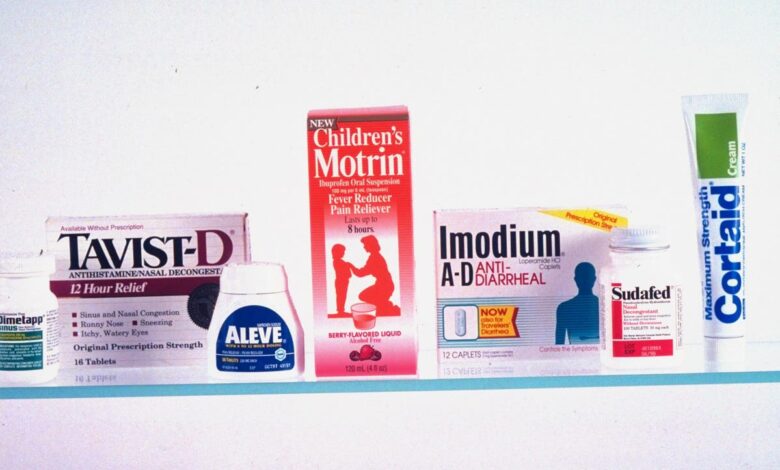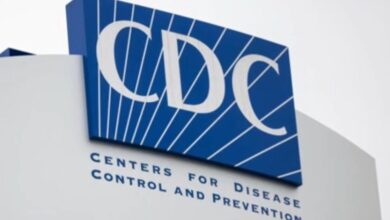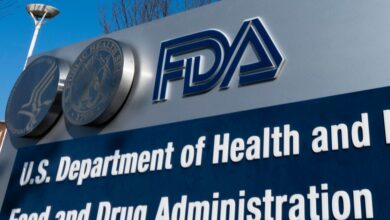Trump Wants More Switches Of Rx-Only Drugs To Over-The-Counter

President Trump’s recent executive order on pharmaceuticals includes a section on facilitating switches of prescription-only drugs to over-the-counter status. Attempts to address the issue of accelerating the pace of switches aren’t new, particularly as they relate to medications in therapeutic areas previously off limits for reclassifications. But without innovative ways to spur reclassifications, barriers to novel switches may persist.
After two notable switches in 2023, the contraceptive norgestrel and the opioid antidote naloxone, no switches were recorded by the Food and Drug Administration in 2024. And prior to 2023, in eight out of the previous ten years in which there were switches, virtually all of them belonged to therapeutic areas such as acne, heartburn, pain and allergies that already had OTC alternatives.
Among the goals outlined in Trump’s executive order issued last month, entitled Lowering Drug Prices by Once Again Putting Americans First, is improving the process by which prescription drugs can be switched to OTC medications. Presumably, this would include more novel switches in categories with no current OTC options. But the order offers no policy pathway on how to accomplish this. And recent layoffs at FDA could constrain the agency’s ability to operate, should details emerge of a specific path the administration wants to take.
Moreover, the goal of increasing the number of OTC switches appears to be inconsistent with the Trump administration’s handling thus far of a rule intended to achieve more reclassifications. It has twice delayed the effective date of a Biden administration rule finalized in December 2024 that would expand the range of prescription drugs eligible for a switch to OTC status via an “additional condition for nonprescription use” protocol. An example of this would be to require consumers to answer questions on a mobile app or automated telephone system to assess their understanding of a product’s instructions on the label. This could eventually apply, for instance, in a therapeutic class such as statins, in which three different drugs in the past 25 years failed in efforts to make the switch.
Prescription-To-OTC Switch Process
A prescription drug typically becomes a candidate for over‐the‐counter status if it’s used for a condition that can be easily self‐diagnosed. In addition, an OTC product should have low abuse potential under conditions of widespread availability. For a medicine to be granted OTC status, it must be deemed sufficiently safe to do so without monitoring from a medical professional, be effective, and include labeling understandable to the layperson to ensure proper use.
For decades, the process of switches has invariably relied heavily on evidence from safety and effectiveness studies concerning the prescription product. But actual use and label comprehension studies have also been prerequisites to evaluate the “OTC-ness” of switch candidates.
History of Switches
The year 2020 marked an end to a dip in numbers of switched products per year, as six drugs became available OTC, harkening back to the heyday of switches in the mid 1990s. However, all three therapeutic categories in which switches occurred—allergy, pain and head lice—already had multiple OTC options. In this respect, these weren’t novel reclassifications. Moreover, the increased switch activity in 2020 appears to be an anomaly, as both after 2020 and in the 15 years before 2020 the FDA approved fewer switches on average annually than it did in the 1990s and 2000s. This included years with zero switches, like 2010, 2018, 2019 and 2024, and several years with only one switch, including 2011 and 2015.
What’s conspicuous regarding the dearth in switch activity is that with the exception of the two products that went OTC in 2023, all recent switches have been in therapeutic categories in which there were already OTC treatments available to consumers.
Ways To Facilitate More Novel Switches
An exclusively behind-the-counter drug implies that rather than finding the product in one of the pharmacy’s aisles and purchasing it at the main cash register, it is not ever on a regular store shelf that customers can access and must be bought with the assistance of an actual pharmacist employee. The classic example of this is insulin, which has been available without a prescription for decades, but is only stocked behind the pharmacy counter. Another example is any drug containing pseudoephedrine. For safety reasons, such products are invariably kept behind-the-counter because of the possibility of pseudoephedrine being used as a starter chemical for methamphetamine production.
The United States doesn’t have a formal behind-the-counter or third class of medicines. And despite there being a few exceptions to the rule, in practice, it’s mostly a binary system of Rx or OTC products. This implies that anyone can enter a pharmacy and get an OTC product off of the shelf without having to interact with a pharmacist.
The situation is quite different in many overseas markets. In Britain, for instance, there is a formal class of behind-the-counter products called “pharmacy,” which are available solely under the supervision of a pharmacist. Then there are “prescription only medicines.” Finally, the United Kingdom denotes the classification “general sale list” to what would be considered off-the-shelf OTC products in the U.S.
To illustrate just how different the two systems are, consider the case of the switch of a low-dose statin called simvastatin to treat high cholesterol nearly 20 years ago in the U.K. Former colleagues and I explained this process in a British Medical Journal article published in 2005. Patients can obtain the statin without a prescription, but the medications are placed behind the pharmacy counter and distributed after a pharmacist’s consultation. By contrast, the U.S. has seen a 25-year history of failed attempts to reclassify certain statins. Three statins—lovastatin, pravastatin and atorvastatin—were rejected by FDA. In 2015, Pfizer pulled its application to make the cholesterol drug atorvastatin available to patients OTC because in an actual use study patients were not using the drug correctly.
Since 2018, consumers in the U.K. can purchase the erectile dysfunction drug sildenafil without a prescription from a pharmacy after a discussion with the pharmacist. The person will be asked questions about his general health to make sure sildenafil is safe to take and the pharmacist will convey which potential side effects to be aware of. Certain triptans for migraine can also be purchased in similar fashion from a pharmacist.
It’s not for lack of trying that the U.S. hasn’t reformed its reclassification system. In fact, the introduction by the FDA of the Nonprescription Safe Use Regulatory Expansion or NSURE initiative in 2013 was supposed to spur a new wave of switches, with a focus on new therapeutic classes. But with the exception of the opioid antagonist naloxone and the oral contraceptive norgestrel, it hasn’t happened.
Experts have said that drugs for high cholesterol, erectile dysfunction and migraine could become eligible for switching in the U.S. However, without a behind-the-counter alternative that involves pharmacist consultations or official protocols for adding conditions for nonprescription use, it’s hard to envision this happening. As stated in the Biden administration’s rule, such additional conditions would involve requiring consumers to complete a self-selection test or review labeling through text, images or video to ensure appropriate use. Perhaps when the Trump administration explicates what it included in its executive order on pharmaceuticals, it will implement the rule.




